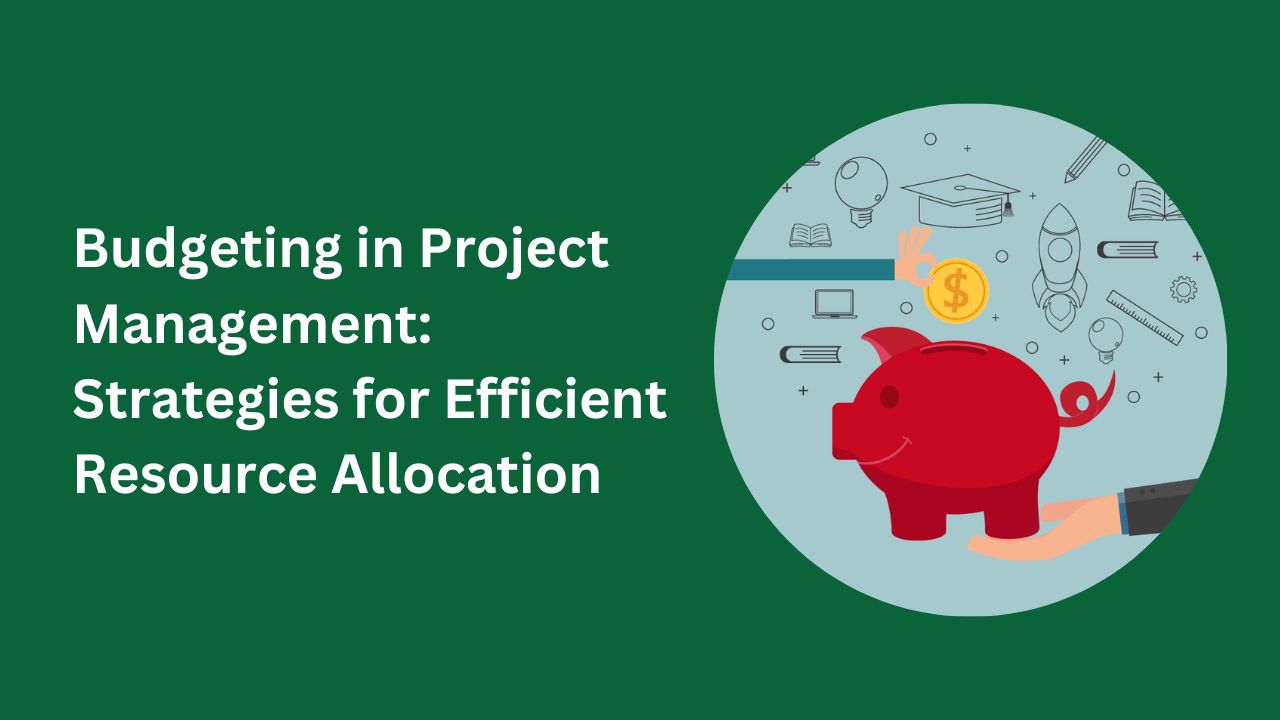In project management, effective budgeting plays a crucial role in ensuring the success of a project. Proper allocation of resources is essential for completing tasks within set timelines, meeting project goals, and delivering high-quality outcomes.
This article explores various strategies for efficient resource allocation in project budgeting, enabling project managers to maximize their resources and achieve optimal results.

Understanding the Importance of Budgeting in Project Management
Budgeting is a critical aspect of project management as it helps in planning, organizing, and controlling project resources. It enables project managers to estimate costs accurately, allocate resources efficiently, and monitor expenditures throughout the project lifecycle.
Effective budgeting ensures that projects are completed within the allocated budget, minimizing the risk of cost overruns and financial constraints.
Defining Project Budgeting
Project budgeting involves estimating the overall costs required to complete a project successfully. It encompasses all the financial resources needed for project activities, including personnel, equipment, materials, and external services.
A well-defined project budget serves as a roadmap for resource allocation and expenditure control.
Read Also: Instilling Financial Discipline: How Budgeting Can Help You Achieve Your Goals
Steps to Develop a Project Budget
Developing a project budget requires a systematic approach. Here are the key steps involved:
Step 1: Define Project Scope
Clearly define the project scope, objectives, and deliverables to determine the resources required for each task.
Step 2: Identify Project Activities
Break down the project into specific activities and tasks, identifying the resources needed for each one.
Step 3: Estimate Resource Requirements
Estimate the quantity and types of resources (human, physical, and financial) required for each activity.
Step 4: Determine Resource Costs
Assign costs to each resource, considering factors like labor rates, material prices, and equipment rentals.
Step 5: Allocate Resources
Distribute the available resources according to the project schedule and priority of tasks.
Step 6: Track and Adjust
Continuously monitor resource utilization and adjust the budget as needed based on actual expenses and project progress.
Types of Project Costs
Project costs can be categorized into two main types: direct costs and indirect costs.
Direct Costs
Direct costs are directly attributed to project activities and can be easily traced to specific tasks. These costs include labor wages, material costs, equipment rentals, subcontractor fees, and travel expenses.
Indirect Costs
Indirect costs, also known as overhead costs, are not directly tied to specific project activities but are necessary for project execution. Examples of indirect costs include administrative expenses, utilities, insurance, and general supplies.
Read Also: Same-Day Budgeting Advance: Unlocking Quick Financial Assistance
Strategies for Efficient Resource Allocation
To optimize resource allocation in project budgeting, project managers can employ the following strategies:
Prioritization of Project Tasks
Prioritize project tasks based on their criticality and dependencies. Allocate resources to high-priority tasks first, ensuring that essential activities are adequately supported throughout the project.
Agile Budgeting Approach
Adopt an agile budgeting approach that allows for flexibility and adaptation to changing project requirements. Agile budgeting enables reallocation of resources based on evolving priorities and helps in avoiding unnecessary expenditures.
Resource Optimization Techniques
Implement resource optimization techniques such as resource leveling and resource smoothing to ensure optimal utilization of available resources. These techniques help balance resource demand and availability, reducing bottlenecks and resource conflicts.
Contingency Planning
Include a contingency reserve in the project budget to account for unforeseen events or risks. This reserve helps mitigate the impact of unexpected delays, cost fluctuations, or scope changes, ensuring project continuity without compromising quality.
Continuous Monitoring and Control
Regularly monitor resource utilization and project expenses to identify any deviations from the planned budget. Implement control mechanisms to address budget overruns promptly and take corrective actions as necessary.
Read Also: Decision Making and Budgeting: How Smart Financial Planning Drives Success
Tools and Technologies for Project Budgeting
Several tools and technologies are available to facilitate project budgeting processes. These include project management software, cost estimation tools, resource management systems, and financial tracking applications.
Leveraging these technologies can streamline budgeting workflows, enhance accuracy, and improve collaboration among project stakeholders.
Benefits of Effective Budgeting in Project Management
Efficient budgeting in project management offers several benefits, including:
- Improved cost control and reduced financial risks.
- Enhanced resource utilization and productivity.
- Better decision-making based on accurate financial data.
- Increased stakeholder satisfaction by delivering projects within budget and on time.
- Optimal allocation of resources, resulting in improved project outcomes.
Challenges in Project Budgeting
Despite its importance, project budgeting can present various challenges. Some common challenges include:
- Uncertain economic conditions impacting cost estimates.
- Limited availability of skilled resources.
- Changing project requirements leading to scope creep.
- Inaccurate forecasting of project costs and resource needs.
- Lack of effective communication and collaboration among project teams and stakeholders.
Read Also: Employee Motivation and Budgeting: Leveraging Financial Planning for Team Success
Conclusion
Efficient budgeting is a cornerstone of successful project management. By adopting sound budgeting strategies and employing appropriate tools, project managers can allocate resources effectively, control expenditures, and deliver projects within budgetary constraints.
By prioritizing tasks, utilizing agile budgeting approaches, optimizing resources, and implementing contingency plans, project managers can achieve efficient resource allocation, leading to successful project outcomes.

